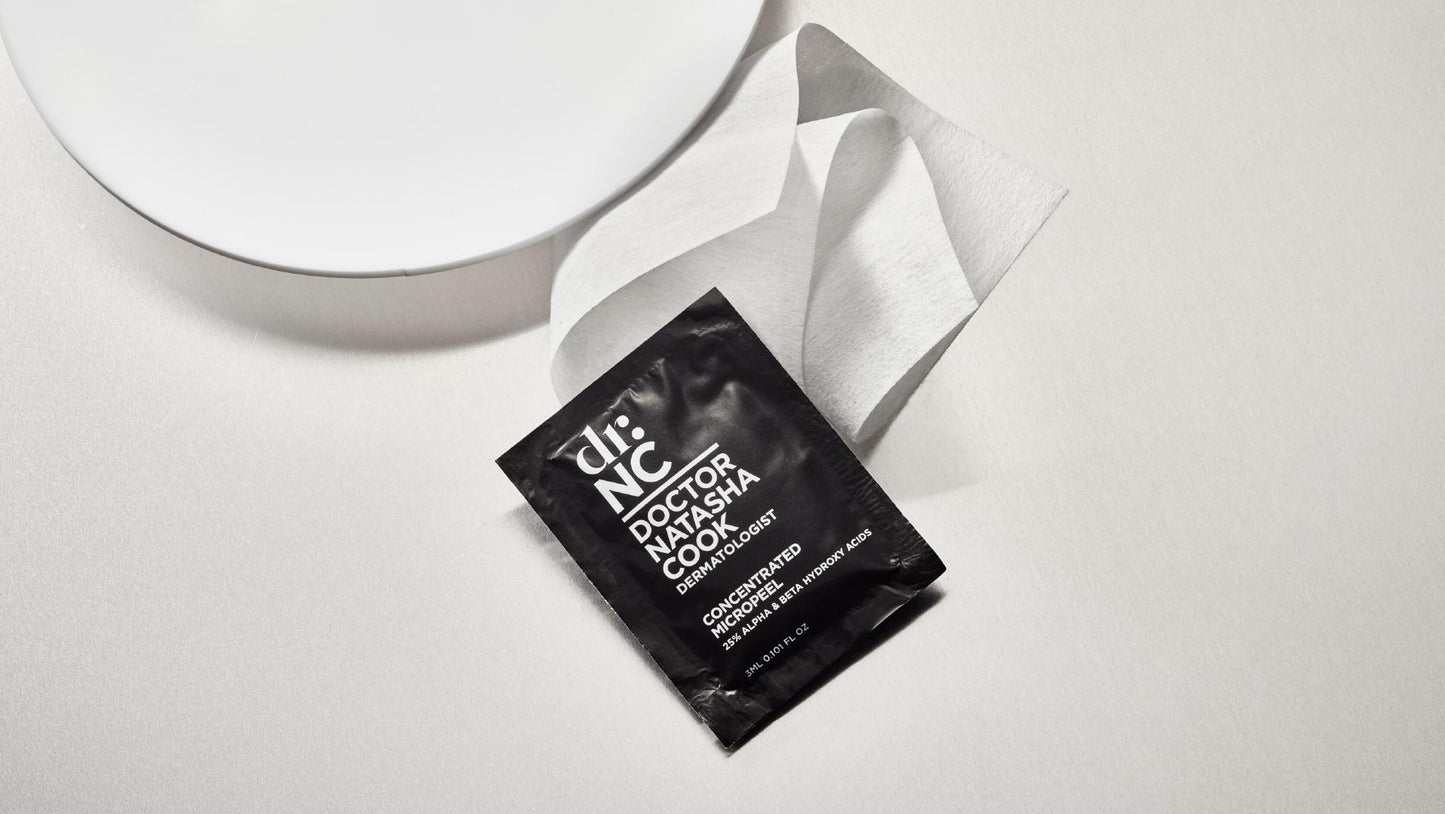
Pigmentation is a hot topic right now and I was recently interviewed by the Women's Weekly on my thoughts on the best ways to deal with it.
Putting it simply, fixing your pigmentation can knock a good 5-10 years off your skin age!
Maintaining an even skin tone is all about understanding how to prevent, protect, and perfect your skin. What you use on your skin every day is imperative, and as I’ve said before look for skincare with the right ingredients in the right concentrations for real results.
Shop the even skin tone range here.
So lets dive in
1. What is hyperpigmentation?
Hyperpigmentation refers to increased and excess pigment in the skin. The pigment (or melanin) comes from the pigment production cells known as melanocytes. The excess pigment then clumps together forming diffuse blotchy pigmentation, freckles, sun spots (or lentigos) and melasma.
When it comes to skincare look for ingredients that block pigment production, that are backed by science. I’ll say it until I’m blue in the face, but vitamin B3 is an absolute MUST. I include it in everything I can, and specifically boosted my Concentrated Illuminator (PM serum) with 10% B3 and the tried and tested 10% vitamin C.
Why? Because they block pigment production.
Discover more about the Concentrated Illuminator here.
2. Is the sun the main cause of dark patches/uneven skin tone?
Absolutely! The sun is the number one culprit - mainly UVA and UVB rays.
We are now realising heat (or infrared radiation) is also a big contributor, emitted mainly by the sun, and other heat sources.
This means protecting with the correct SPF is essential. Look for physical blockers with at least SPF 30. The physical blockers are inert meaning they don’t cause skin reactions, and give broad spectrum protection against UVA & UVB rays.
It's important you put it on EVERYDAY - and thats why I made the Concentrated CC+ . Most people complain about the thickness/heaviness of sunscreens as an excuse not to wear them, so my Concentrated CC+ was formulated to feel lightweight (like you weren’t wearing sunscreen at all).
It also offers SPF 30, broad spectrum UVA/UVB protection with physical blockers only and perfects your skin with colour perfecting particles.
More than just a CC cream it’s boosted with 5% B3 to assist in preparing UV damage on your skin. I wear it EVERYDAY. Discover more here.
3. Are dark spots common? Does Australia's harsh climate contribute?
Dark spots are EXTREMELY common and about 80% of my patients have them. Australia is renowned for pigmentation more so than the northern hemisphere as we have the harshest conditions in the world.
My advice when it comes to treating sunspots, is to try not to get them in the first place. When that's too late - look for skincare with clinical grade concentrations of active ingredients and a specialist who knows their laser technologies and pigment pathologies.
Discover the even skin tone range here.
4. How can we prevent sun spots?
Protect protect protect.
UV is the biggest contributor, so avoid sun at all costs. Wear SPF 30 and above with zinc and titanium dioxide in it. Make sure you reapply sun protectors and invest in hats and sunglasses. Don’t forget protecting yourself when driving (see below).
5. What preventative tips can you give about protecting your body?
For example, while you are driving wear gloves, sunscreen on your arms, neck and chest & keep a light scarf in the car to cover your neck/décolletage .
Another tip, when you apply your skincare at night, rub the residual on the backs of your hands and décolletage. I always do this, especially when I’m using the Concentrated Micropeel AHA/BHA (25%).
These take home peels lift and push out pigmentation, stimulating new cell production and resulting in a more radiant complexion. Share the love. It's like taking the clinic home.
6. What is melasma? Can the pill cause dark spots as well?
The biggest culprit is the sun. The pill may exacerbate melasma but UV rays and heat causes it.
An interesting fact is that my colleagues in NYC are noticing that women who sun protect like there is no tomorrow are still getting melasma. They have identified that the potential culprit is heat (or infrared radiation) from the popular Bikram Yoga.
7. What cosmetic treatments can help with hyperpigmentation? What are their side effects, downtime and estimated costs?
Lasers are very helpful BUT you must get the correct laser for the specific type of pigment you have. Downtime varies from minimal to a week. Sometimes a dressing may be needed if you are laser peeling the pigment spots off.
Its imperative you go to an expert so they can diagnose the type of pigment you have and therefore use the correct technology. Most patients have a combination of different pigment types so may need multi-modality laser treatment.
8. What ingredients should we look out for in topical products to help hyperpigmentation?
My two over the counter favourites are vitamin B3 (niacinamide) and vitamin C. These vitamins work by blocking the pigment production enzymes.
AHAs also help to exfoliate out the pigment. I like lactic acid, mandelic and tartaric. Vitamin A assists in exfoliation as well.
At last but definitely not least - Don’t forget sunscreen!
I'll be sharing more of my tips for treating pigment in the coming weeks so stay tuned and learn about my favourite formulations for fight pigment below.
Australian Dermatologist Dr Natasha Cook

























